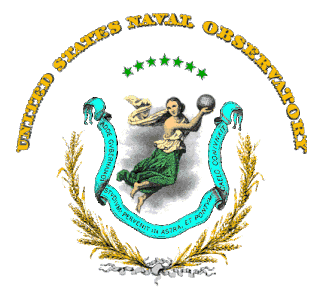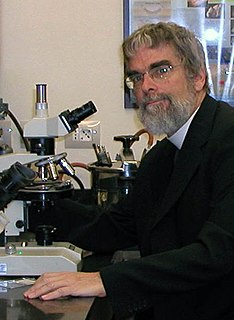
The United States Naval Observatory (USNO) is one of the oldest scientific agencies in the United States, with a primary mission to produce positioning, navigation and timing for the United States Navy and the United States Department of Defense.

An observatory is a location used for observing terrestrial, marine, or celestial events. Astronomy, climatology/meteorology, geophysical, oceanography and volcanology are examples of disciplines for which observatories have been constructed. Historically, observatories were as simple as containing an astronomical sextant or Stonehenge.

Francis Marion, also known as the Swamp Fox, was a military officer who served in the American Revolutionary War (1775–1783). Acting with the Continental Army and South Carolina militia commissions, he was a persistent adversary of the British in their occupation of South Carolina and Charleston in 1780 and 1781, even after the Continental Army was driven out of the state in the Battle of Camden. Marion used irregular methods of warfare and is considered one of the fathers of modern guerrilla warfare and maneuver warfare, and is credited in the lineage of U.S. Army Rangers and the 75th Ranger Regiment.

Arthur Middleton, of Charleston, South Carolina, was a signatory of the United States Declaration of Independence.

The Arecibo Observatory, also known as the National Astronomy and Ionosphere Center (NAIC) and formerly known as the Arecibo Ionosphere Observatory, is an observatory in Barrio Esperanza, Arecibo, Puerto Rico owned by the US National Science Foundation (NSF).

The Washburn Observatory is an astronomical observatory located at 1401 Observatory Drive on the University of Wisconsin–Madison campus in Madison, Wisconsin, United States. Completed in 1881, it was a major research facility for about 50 years. Today, it is home to the UW-Madison College of Letters and Science Honors Program, while the telescope remains in use by students in introductory astronomy courses and the general public during open houses and viewings.

The Hartung–Boothroyd Observatory (HBO) is located atop Mount Pleasant near the Cornell University in Ithaca, New York (US). It is used mainly as a teaching facility for upper-level undergraduate astronomy classes. The observatory is named to recognize funding from M. John Hartung, a 1908 Cornell graduate and later chemical industrialist, and to honor Samuel L. Boothroyd, the founder of Cornell's Department of Astronomy. The facility was designed and directed from 1974-2012 by James R. Houck.

Brother Guy J. Consolmagno, SJ, is an American research astronomer, physicist, Jesuit religious brother, Director of the Vatican Observatory, and President of the Vatican Observatory Foundation.
Francis Marion University is a public university near Florence, South Carolina. It is named in honor of American Revolutionary War Brigadier General Francis Marion.

Francis Marion Cockrell was a Confederate military commander and American politician from the state of Missouri. He served as a United States Senator from Missouri for five terms. He was a prominent member of the famed South–Cockrell–Hargis family of Southern politicians.

The Godlee Observatory is an old astronomical observatory located in a tower on the roof of the University of Manchester's Sackville Street Building, G floor, in the City Centre of Manchester, England. It was given to the city of Manchester by Francis Godlee when construction was completed in 1902. The dome is constructed out of papier-mâché.

Clarence T. Jones Observatory is an astronomical observatory in Chattanooga, Tennessee (US), owned and operated by University of Tennessee at Chattanooga.

For the mountains in Tajikistan, see the Fann Mountains.

The Theodor Jacobsen Observatory is the on-campus observatory of the University of Washington. Built in 1895, it is the second oldest building on campus and was constructed using the remaining Tenino sandstone blocks from Denny Hall, the oldest and first building on campus. The refracting telescope, enclosed within the dome, has a 6-inch Brashear objective lens on a Warner & Swasey equatorial mount. The observatory also includes a transit room on the west side and a 45-seat classroom, which was built later, on the south side.

The King's Observatory is a Grade I listed building in Richmond, London. Now a private dwelling, it formerly housed an astronomical and terrestrial magnetic observatory founded by King George III. The architect was Sir William Chambers; his design of the King's Observatory influenced the architecture of two Irish observatories – Armagh Observatory and Dunsink Observatory near Dublin.
The Vetlesen Prize is a prize in geology awarded jointly by Columbia University's Lamont-Doherty Earth Observatory and the G. Unger Vetlesen Foundation. The prize is generally regarded as the highest distinction in geologic studies, and the "Nobel Prize for geology".
The Ștefan cel Mare University of Suceava, also known as University of Suceava, is a public university in Suceava, Suceava County, Bukovina, Romania officially founded in 1990 and initially established in 1963 as the Institute of Pedagogy. It was named in honour of the Moldavian Prince Stephen the Great. The university is located on Strada Universității nr. 13 in the Areni neighbourhood.

The Georgetown University Astronomical Observatory was founded in 1841 by Father James Curley of the Department of Physics at Georgetown College. Father Curley chose a site on the college grounds, planned the building, and supervised its construction to its completion in 1844. Costs were initially paid by Rev. Thomas Meredith Jenkins, S.J., and Rev. Charles H. Stonestreet, S.J., who were Georgetown professors at the time. The observatory was used in 1846 to determine the latitude and longitude of Washington, D.C., which Curley determined to be latitude 38°54′26N and longitude 5h8m18.29s.

The Francis Marion Patriots are the athletic teams that represent Francis Marion University, located in Florence, South Carolina, in NCAA intercollegiate sporting competitions.

z8_GND_5296 is a dwarf galaxy discovered in October 2013 which has the highest redshift that has been confirmed through the Lyman-alpha emission line of hydrogen, placing it among the oldest and most distant known galaxies at approximately 13.1 billion light-years (4.0 Gpc) from Earth. It is "seen as it was at a time just 700 million years after the Big Bang [...] when the universe was only about 5 percent of its current age of 13.8 billion years". The galaxy is at a redshift of 7.51, and it is a neighbour to what was announced then as the second-most distant galaxy with a redshift of 7.2. The galaxy in its observable timeframe was producing stars at a phenomenal rate, equivalent in mass to about 330 Suns per year.

















